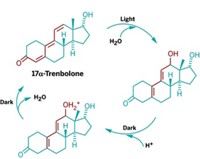Advertisement
Grab your lab coat. Let's get started
Welcome!
Welcome!
Create an account below to get 6 C&EN articles per month, receive newsletters and more - all free.
It seems this is your first time logging in online. Please enter the following information to continue.
As an ACS member you automatically get access to this site. All we need is few more details to create your reading experience.
Not you? Sign in with a different account.
Not you? Sign in with a different account.
ERROR 1
ERROR 1
ERROR 2
ERROR 2
ERROR 2
ERROR 2
ERROR 2
Password and Confirm password must match.
If you have an ACS member number, please enter it here so we can link this account to your membership. (optional)
ERROR 2
ACS values your privacy. By submitting your information, you are gaining access to C&EN and subscribing to our weekly newsletter. We use the information you provide to make your reading experience better, and we will never sell your data to third party members.
Environment
Chicken Feathers Carry Drugs
Pharmaceuticals In The Environment: Agricultural feed and fertilizer made from chicken feathers may transfer drugs to the environment
by Naomi Lubick
March 29, 2012

Chicken feathers processed at high temperatures become “feather meal” that finds use as fertilizer and animal feed. But the feathers retain a slew of pharmaceutical compounds, and not just drugs used to treat chickens, researchers report in Environmental Science & Technology (DOI: 10.1021/es203970e). They discovered antibiotics, fungicides, caffeine, and other compounds in feather meal, and suggest that the meal may be a conduit for antimicrobial resistance.
Scientists have found that pharmaceuticals flow into the environment from human and animal waste, including through agricultural use of these biosolids. The presence of these compounds has raised concerns over whether drugs and their metabolites might affect animals and plants, or might foster antibiotic resistance in microbes.
To test feather meal from chickens, David Love at Johns Hopkins University and his colleagues bought a dozen fertilizer and animal feed products made from the meal. They tested each sample for 59 fungicides, antibiotics, and other compounds using liquid chromatography coupled with tandem mass spectrometry. The researchers found 24 drugs and personal-care products, including the antibiotics ciprofloxacin, enrofloxacin, and tetracycline; antihistamines; the pain reliever acetaminophen; and fluoxetine, better known as Prozac.
Farmers feed some of these drugs to chickens, notably antibiotics to keep the animals healthy in crowded conditions and to make them grow faster. But the team also detected strictly human-use substances such as caffeine and the hormone norgestimate, which is used in oral contraceptives and to treat adverse symptoms of menopause.
To model what happens to these substances during rendering that turns feathers to meal, the team put feather meal samples spiked with the compounds through an autoclave at high temperatures. They found that most of the chemicals tested partially broke down, but at least 20% of each of the parent compounds remained.
The results highlight an unusual pathway for pharmaceuticals to follow into the environment, and one that deserves additional research, comments Alistair Boxall, an environmental chemist at England’s University of York, who did not take part in the work. “We really need to develop a better understanding of the importance of these pathways compared to the more traditional routes of exposure,” he says, “such as manure and biosolid application to fields.”





Join the conversation
Contact the reporter
Submit a Letter to the Editor for publication
Engage with us on Twitter